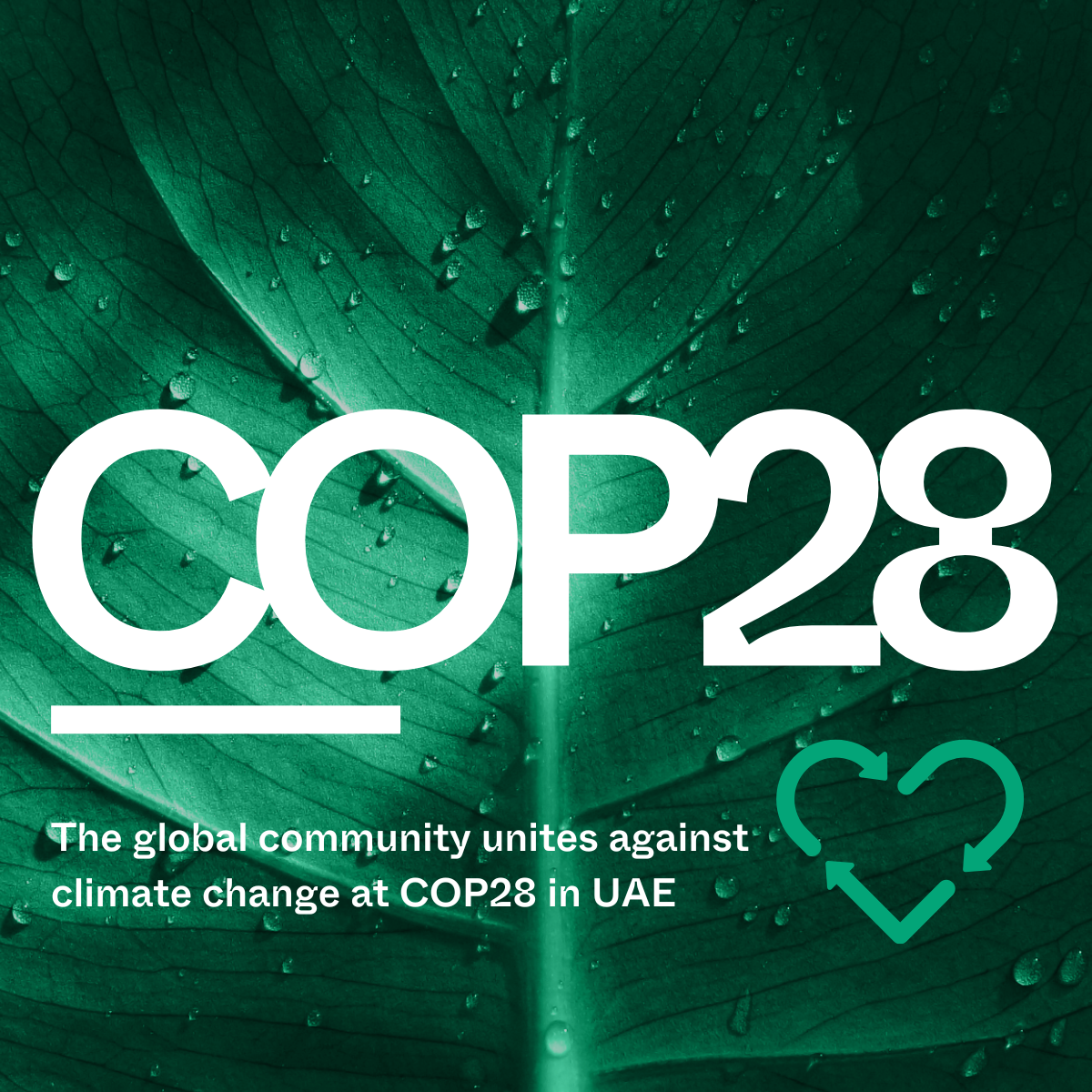COP28: Genuine Progress or a Lesson in Semantics?
With the COP28 climate summit drawing to a close this week, Innovations and Sustainability Associate Hannah Kissick reflects on the outcomes and commitments.
It is incredibly easy to be cynical about anything that summit requireing 198 different countries to agree to one single document. And when it comes to agreements on climate change in particular, the pessimists seem to rule the day.
Before it started, this year's COP didn't exactly allay the fears of sceptics; being hosted in a major petrostate, with around 2,500 fossil fuel delegates in attendance and, just hours before the talks started, documents being leaked implying Saudia Arabia and the UAE were planning to use the talks to sell oil and gas.
Although it wasn't just the petrostates which were bringing the mood down. Released in September, the draft text of the Global Stocktake - the review of every nNation's climate commitments - stated "implementation of the Paris Agreement is lacking across all areas and not where it should be". Indeed, the latest review of each country's Nationally Determined Contributions (NDCs) by the Climate Action Tracker shows that even if all targets were met, we'd still see global temperature increases of 2.5-2.9oC by 2100, far above the 2oC maximum agreed in Paris.
It's fairly understandable why agreeing the final text of the Global Stocktake and what actions countries will take going forward wasas seen by many as an uphill struggle – , and that COP28 wass just lip-service to pretend something was being done.
Nations and industries leading with cooperation
It was a great surprise then, when on day one delegates announced on day one that financing for the Loss and Damage Fund had been agreed. Raised during last year'’s COP in Sharm el-Sheikh, this was set to be one of the key debates during the conference, with developed and developing nations declaring a number of conflicting ideas over the management of the fund, and who should contribute and benefit. But on the very first day of the conference, the news came out that negotiations had taken placebeen made, and developed nations, including the UAE, had agreed a total £556m for the fund.
Whilest this sum doesn'’t go nearly far enough to cover the expected amounts needed -– the USA were heavily criticised for their measly $17.5m donation -– to get anything agreed at all was seen as a huge breakthrough, and coming so early in the conference, set the tone that cooperation and solutions were not completely off the table in the UAE.
Other successes include a pledge from 118 nations to triple renewable energy capacity by 2030 and double the global average rate of energy efficiency by the end of the decade. 63 countries, including the USA, have committed to reducing emissions related to cooling by 68% by 2050 compared to 2022 levels. 134 countries signed the first ever declaration on reducing emissions from food production. And Australia joined the ‘Glasgow Statement’ – a collation of 39 other nations, including the USA and UK who are committed to ending financing for overseas fossil-fuel projects.
Away from the countries’y’s own delegations, business and industry were also coming together to make their own commitments at side events. Six of the biggest dairy companies launched an alliance to curb methane emissions. Methane is 27 times more potent than CO2, and the dairy industry accounts for almost 3.5% of global CO2e emissions. This agreement from companies including Kraft Heinz, Nestlé, and Danone, comes as a major step forward,, and is an indication that companies don’t may not necessarily need require governmental regulations to force change.
Focusing on fossil fuels
However, the biggest news was around the text of the Global Stocktake. For the first time in 20 years of COP meetings, the phrase ‘Fossil Fuels’ was actually used in a decision. Specifically, the text states the intention of: “transitioning away from fossil fuels in energy systems, in a just, orderly and equitable manner, accelerating action in this critical decade, so as to achieve net zero by 2050 in keeping with the science”.
There is much debate about the semantics of this and other statements within the text, and how these could provide loopholes for less supportive countries to continue with business as usual. It only talks of reducing fossil fuels “in energy systems” for example, not phasing them out completely. Elsewhere, the text allows for “transition fuels” which could mean natural gas use is allowed to expand as a replacement for the higher CO2 emitting coal. And there is ample allowance for fossil fuel use to continue, provided it is abated with Carbon Capture and Storage Technology (CCS). CCS is all well and good in theory, provided that carbon stays captured and stored – something which a simple accident could easily endchange.
There was also no commitment regarding the implementation and funding of the agreement. One of the headline discussions around carbon markets – known as “Article 6” – failed to come to a conclusion, and has been kicked down the road to COP29.
There are many, many voices - The Alliance of Small Island States, Al Gore, the IPCC, and Friends of the Earth to name a few – who are shouting about how this text is does not go far enough. And they’re’re right. But that shouldn’t detract from the positives: – a commitment to a move away from fossil fuels, with a hard deadline of 2050;, and a recommendation to align ambitions with the 1.5oC maximum increase outlined by the IPCC, rather than the 2oC limit written in the current Paris Agreement. Just two weeks ago there wasn’t even agreement on where – and if therefore IF – the next COP would even take place. So this agreed text is IS a big deal.
COP29 and beyond
Much to the chagrin of many, COP29 will once again be held in a country whose economy has a heavy reliance on fossil fuel production. Oil and gas production accounted for more than 92.5% of Azerbaijan’s export revenues in 2022. This decision, alongside the watering down of the final text, has activists worried that the commitments being made are just green virtue-signalling – particularly when mAnd to meeting even the less stringent agreements made this year will require a step change in economies across the world., something which activists are pessimistic about.
For example, we have just 6 years to meet a target for a trebling of renewable energy output and doubling of energy efficiency. But in the UK, it can take 4 years or more to get planning permission for an onshore wind turbine. And I’ve argued before about how current UK funding for decarbonisation projects doesn’t come close to meeting our needs. Whilest it’s all well and good making these pledges, in reality, a radical shift in current government policy is needed if the UK is going to contribute their fair share to meet this commitment.
At the end of the day, it doesn’t matter where in the world the negotiating room is or even, to an extent, what is said within it.
It’s what happens when the delegates leave that room that’s key.

